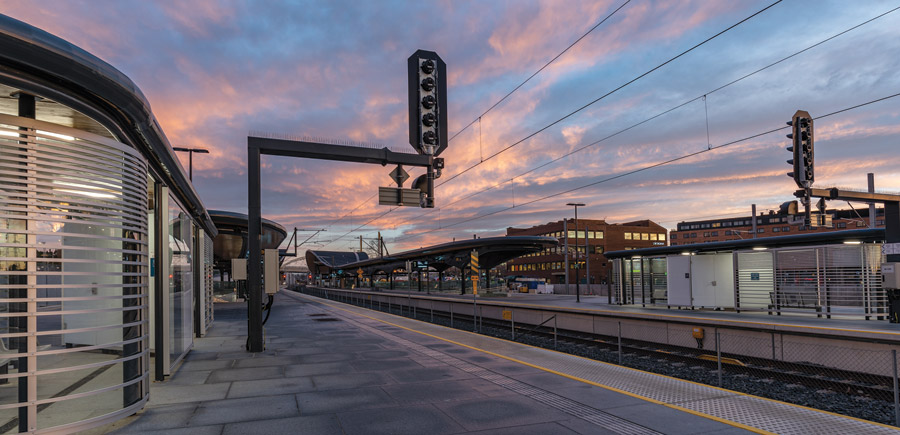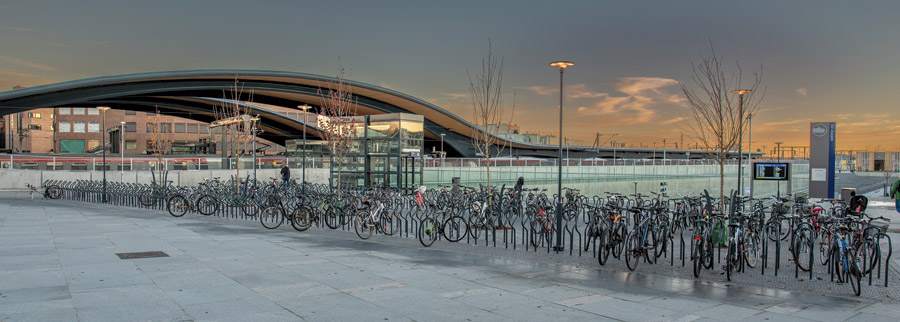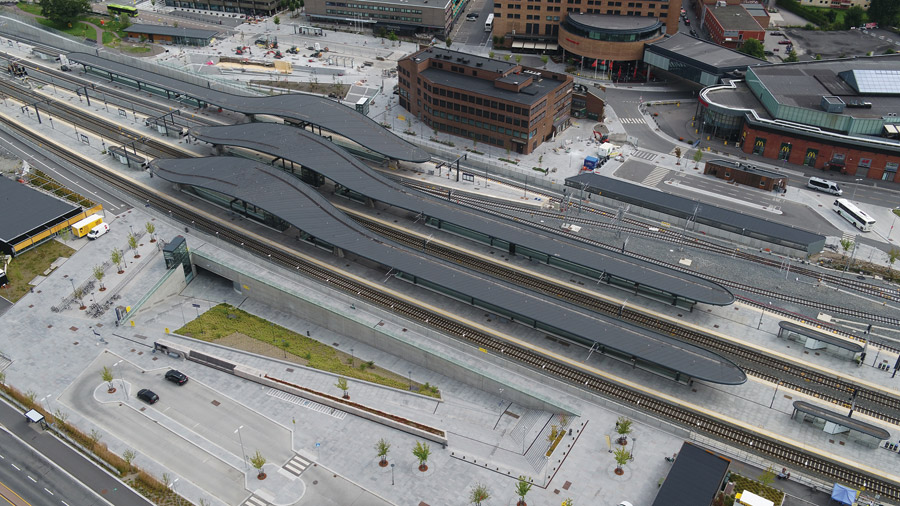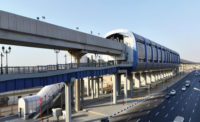EPC SKI (FOLLO LINE)
Ski, Norway
Best Project
Submitted by: OHLA
Owner: Bane Nor
Lead Design Firm; Civil, Structural and MEP Engineer: Ayesa Ingenieria y Arquitectura S.A.
General Contractor: OHLA Norge
Geotechnical Design: Esteyco S.A.
Consultant: Pondio Ingenieros S.L.
Undulating timber roofs now shelter passengers using a new railroad station at the Norwegian city of Ski. It lies close to the south portal of the multibillion-dollar underground high-speed Follo Line railroad to the capital city, Oslo.
With their frameworks fabricated in Spain and erected in Ski by Spanish workers, the three load-bearing cross-laminated timber canopies crown a $428-million design/build station and track project led by OHLA Norge in its first Norwegian venture. Work included demolishing and replacing a smaller old station in “two very complex stages … to allow the train traffic running safely and without disruption,” says Jeronimo Gutierrez de Rave Aguera, OHLA’s country manager.

Photo courtesy OHLA
The six-track station is just south of where the Follo Line surfaces about 20 km from Oslo. Opened to traffic before last Christmas, the high-speed railroad was, eight days later, closed until this March by overheating power cables.
But despite difficult ground conditions, the Ski station itself opened on schedule last year and on budget, according to OHLA. “We opened the full train traffic … in August 2022 and the trains were operating on the existing tracks outside of the tunnels,” adds Gutierrez. “Our station was never closed … so we felt very happy that our work was all the time operational.”

Photo courtesy OHLA
Including 3.5 km of track between Ski and the small Langhus community, the station project required the excavation of 1.5 million cu m of clean and contaminated soil, rock blasting next to existing traffic and around 1.5 km of tunneling. A panoply of geotechnical techniques provided temporary and permanent support to buildings and excavations.

Photo courtesy OHLA
Not all this geotechnical work was planned. The unwelcome discovery of “quick” clay led the contractor to install a forest of cement/lime columns to stabilize the ground and prevent it from liquefying when under stress, explains OHLA.





